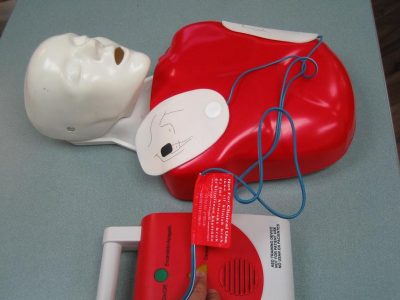For Chris Troughton, a defibrillator saves lives. It was able to save his life 4 times. Troughton was planning on getting an automated external defibrillator (AED) for his own house. He later decided to share the device with the entire neighborhood by installing a weatherproof cabinet in front of his house.
Easy access to an AED
According to Troughton, it is the ideal move since it is readily accessible to many people. There are all kinds of people in the neighborhood ranging from small children to the elderly.
Back in 2010, he was driving home after playing hockey when he felt a burning sensation. He insisted his son to drive him to a healthcare facility. He ended up in a state of coma for up to 10 days.
A sudden cardiac arrest occurs daily in Canada. The rate of survival is relatively higher up to 75% if an AED is used during the initial 10 minutes. The public-access AEDs are becoming popular in public areas but deaths from sudden cardiac arrest on a yearly basis occurs mostly in homes.
The danger of sudden cardiac arrest
The reality is that emergency services in most cases do not arrive on time. With an AED available in the community, it allows neighbors to act while medical help is on the way.

It is simple to use an AED, even for those who have not used one before. The device has an audio recording that instructs the user on what to do. The initial step instructs the user to call for emergency assistance and perform chest compressions. The AED can also diagnose whether the victim is having arrhythmias. If present, the unit delivers an electric shock to restore effective heart rhythm. If an arrhythmia is not present, a shock is not needed.
Importance of first aid training
Cardiopulmonary resuscitation (CPR) and using an automated external defibrillator (AED) can save a life. Prompt delivery of life-saving techniques improves the chances of survival during emergencies.
For more information about this story, click here.
LEARN MORE
Learn how to be ready for emergencies by enrolling in our CPR and AED courses. Our courses maintain social distancing measures with reduced class sizes to maintain the minimum 2 meters apart along with the mandatory use of face masks and regular temperature checks. The venue of the courses undergoes regular, enhanced cleaning, and disinfection routines.
For more information, check out these sources:
https://www.mayoclinic.org/diseases-conditions/sudden-cardiac-arrest/symptoms-causes/syc-20350634
https://en.wikipedia.org/wiki/Defibrillation
https://www.webmd.com/first-aid/automated-external-defibrillators-aed-treatment

